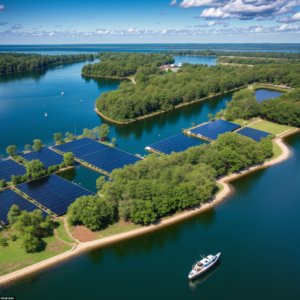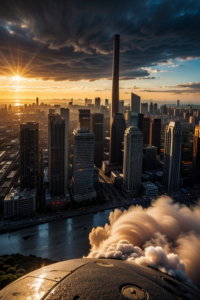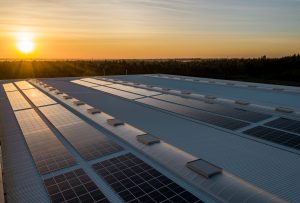Water Elements in Space Around Us
Water was used as a landscape-architectural element in the arrangement of living space by the civilizations of Egypt and Mesopotamia. They used a canal system directed to their estates and managed to bring water from their great rivers Tigers, the Nile and the Euphrates to irrigate their fields. Later, they realized that the water can be used in another way too. They used it as a decorative element and used it as part of fountains, cascades, streams, lakes, all with a reason to enjoy its power.

Water is of great importance for industry, traffic, and in addition it is used for rest, recreation and space decoration. Aquatic elements in nature can be divided into natural and artificial.
Rivers, lakes, seas are natural, and artificial ones were created by man for his own needs. For
example, in order to be able to drink water, he made fountains, and in order to show the power and magnificence of a building, he creates water mirrors. The water in the space must satisfy its functional task (drinking fountain, swimming pool), but its aesthetic significance must also be emphasized. Every larger open space that is designed for people on its surface must have a fountain. The fountain must be supplied with drinking water and placed in a visible place. The construction of a fountain often has a symbolic or historical significance. It is not uncommon to see that the fountain was placed in some important place, since something happened in the past in that certain place that needs to be preserved these days and in the future.
Fountains – attractive water elements
Fountains are also being built to preserve the memory of some people. The fountain can also be made as a sculpture, or other objects can be erected next to it. Other water elements used as a source of drinking water are wells. They are mostly related to the rural ambience. They used to be a source of drinking water. Today, they can mostly be found on some ethno farms to show tradition and their decorative value.
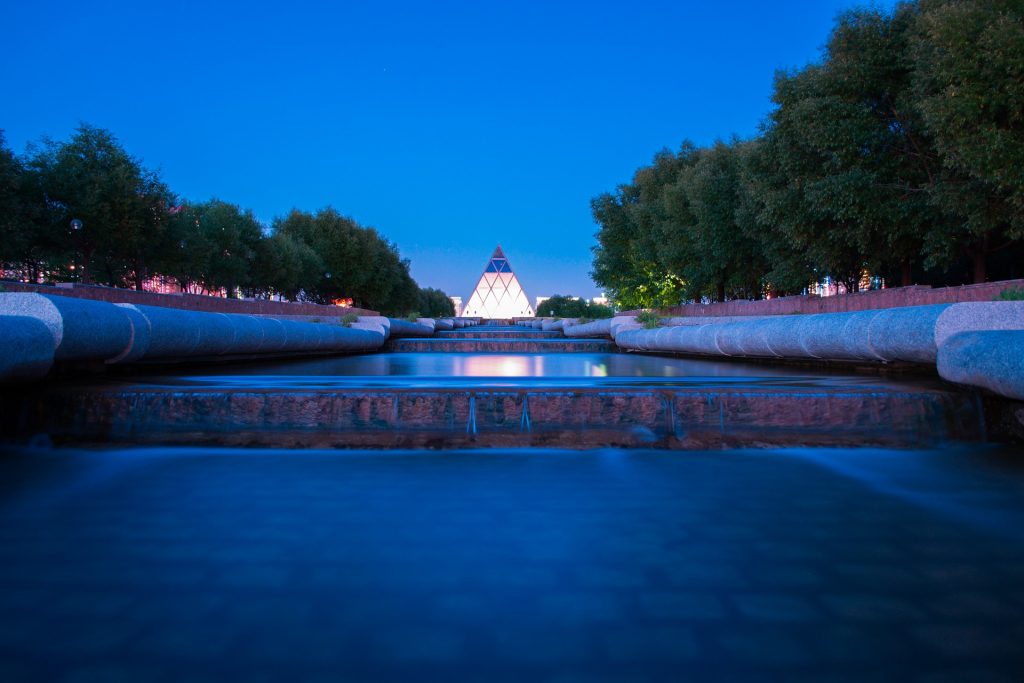
Fountains are attractive water elements that give dynamic to the space. They are placed on the central part of the space and determine its dominant point. Earlier, the construction of the fountain was tied to magnificent buildings in order for the master to show his power.
Through a series of pipes under pressure, water from rivers and streams is directed to parks to supply fountains. Skillful manipulation with the water in the fountain enables the creation of a pleasant atmosphere in the space through various sounds, shapes, refraction of light.
An interesting example is the fountain in Italian and French parks, such as in the park of Villa d’Este in Tivoli, the alley of “100 fountains” or the Apollo fountain in the park of Versailles. Today, fountains are becoming modern water elements of open space and they are combined with light, music, various sculptures and objects to emphasize their significance and dominance.
Waterfalls
Waterfalls are another dynamic water element in the open space that are similar to fountains. The difference is that waterfalls are placed only in those places where the relief allows it. The waterfall needs to be designed on a sloping terrain in order to achieve the effect of falling water. The water drop can be from small heights or from higher ones. Also, a different effect is achieved if the water falls in large quantities and a different one if it falls in small ones.

Apart from the murmur of water and its fall, an even greater impression of the power of water is achieved when water hits the surface during a fall. There are waterfalls whose water splashes on impact, as well as those whose water flows nicely and calmly, creating a
so-called water curtain.
The harmony of nature and architecture and the careful composition of the harmony of rock, light and water can be seen in the example of the famous waterfall “Falling water” built in 1937 in Pennsylvania, a project of the American architect Frank Lloyd Wright. No matter
which water element is used in the space, they all have a common aesthetic representation, the potential of water and the open space in which they are placed.
Lakes – for beautifying the surrounding
Water surfaces in addition to the aesthetic, also have a great environmental importance. Water is responsible for creating favorable microclimatic conditions. During summer temperatures, the proximity of water in the room lowers the temperature by several degrees, making the space fresher and more pleasant to rest. It also creates favorable conditions for the growth and development of plant and animal species in the environment.
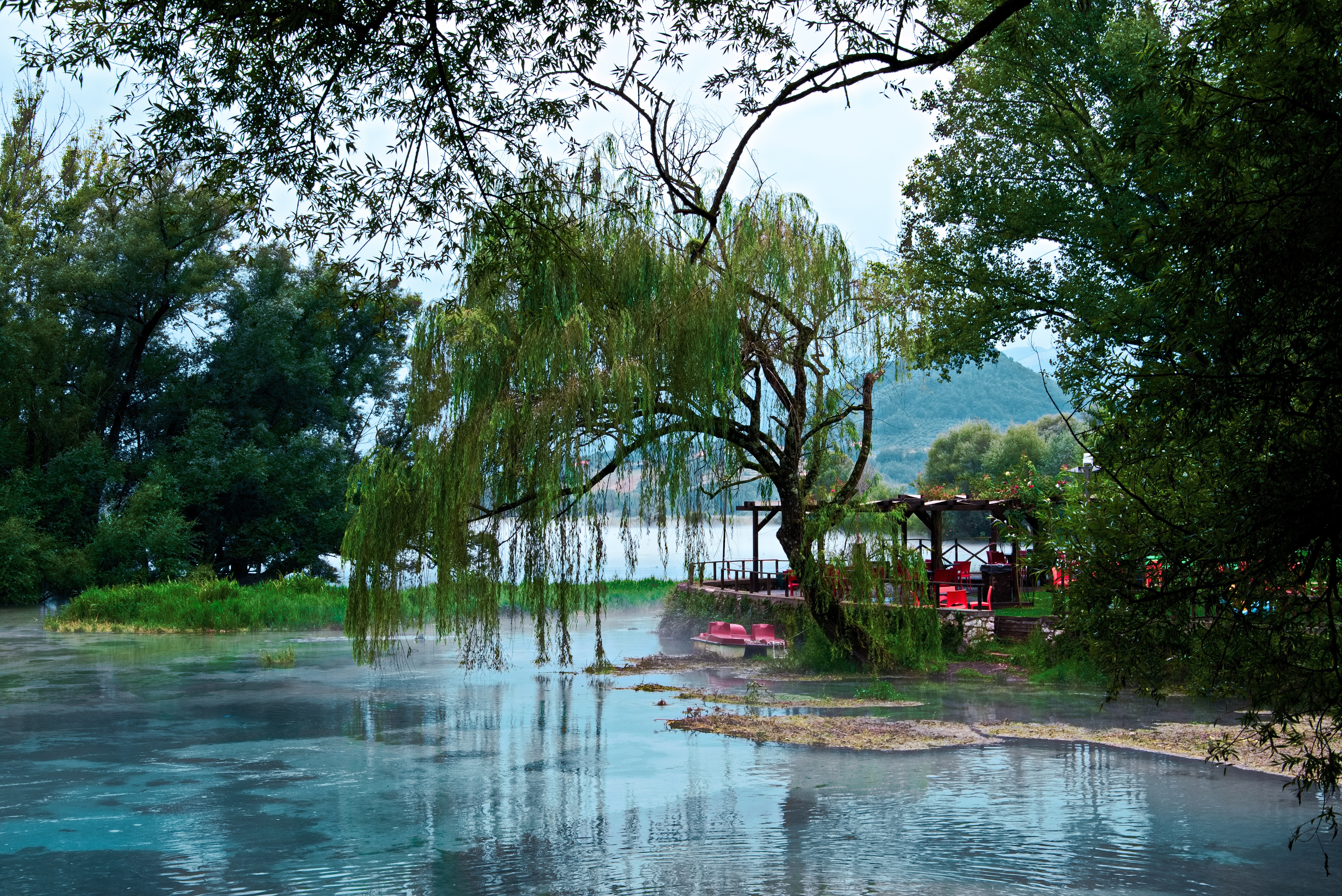
Lakes, as water static surfaces, provide pleasant conditions for rest and recreation. When building a lake, the aim is to achieve as natural a shape as possible and to fit into the
ambience.
Lakes in parks are most often the dominant points and represent a representative place of composition. The lakes are flat surfaces and create a contrast to the other elements used in shaping the space.
The best example of the use of water is illustrated by the Japanese garden. The character of these gardens is that they give the impression that there was no human intervention
in creating the space.
An important characteristic of water is that it creates reflection. Water mirrors are water elements that give the most decorative character to the space. They are built near large buildings to double their beauty as they are reflected in the water. They are usually of regular shape and water surface is in level with the surrounding plateau. This high aesthetics is achieved not only by using water, but also by treating the bottom of the pool. The depth of the pool is 45-50 cm, and it gives the opportunity to see the decorative paving at the bottom. In order to achieve all this, it is necessary for the water surface to be completely calm. The famous Taj Mahal building in India is reflected in a mirror and represents the perfection that Shah Jahan wanted to achieve for his beloved wife.

In the end, the most important thing is to point out that regardless of whether water is used as a decorative element or as a necessity, it is valuable and needs to be used rationally.

